Dell XPS 13 Review
by Brett Howse on February 19, 2015 9:00 AM EST- Posted in
- Laptops
- Dell
- Ultrabook
- Broadwell-U
- XPS 13
Display
Dell offers two display choices in the XPS 13. The base model comes with an IPS 1920x1080 (Full HD, or FHD) Sharp 1420 panel, with LED backlighting of course. The upgrade is to the Sharp 1421 panel, which increases the resolution to 3200x1800 (QHD+), for 272 pixels per inch. Even 1080p on a 13.3 inch panel is a nice resolution, but the high DPI display really shines, especially in the new Windows 8 environment. Desktop apps can still have some issues with High DPI, but it is becoming less of a problem over time.
Sharp is the maker of all IGZO displays, which we have seen before in a couple of other devices such as the Razer Blade. The big benefit to IGZO (Indium Gallium Zinc Oxide) panels is they allow more light through the display, reducing the power requirements for the backlight. This generally means that we get to keep the full RGB stripe, which should help with color accuracy.
Being able to see both sets of pixels just shows how many more pixels are packed into the High DPI panel. 1080p is around 2 million pixels and 3200x1800 is 5.76 million pixels. It is a big difference and gives a big increase to clarity, but it comes with the cost of increased power usage, despite the IGZO TFT.
Dell has the displays listed as IPS (In-Plane Switching) panels on their spec sheet, and they do not seem to have any of the off-angle color shift of a VA (Vertical Alignment) design. Whatever the display type, it certainly is not TN (Twisted Nematic) so even at extreme angles there is not the loss of contrast associated with those displays. Also, you can see the anti-glare coating on the FHD pixels, which is the distortion shown on the subpixels.
To test the panels, we turn to SpectralCal’s CalMAN 5 software suite, the X-Rite i1Display Pro Colorimeter for brightness and contrast measurements, and the X-Rite i1Pro Spectrophotometer to measure the color accuracy.
One more note about the Dell displays though is that they have an auto-brightness adjustment with no way to disable it. It seems to manifest itself the most, and the most severe, when there are large contrast changes on-screen. For this reason, our automated testing for the color accuracy would not work at all because of the abrupt changes on the screen as it flashed among the various colors. This would cause the screen to go bright and dim and caused some very erroneous readings.
I was able to get around it for the color testing by manually going to on-screen color patterns, however display calibration is impossible with this brightness adjustment so that was skipped. I have contacted Dell to inquire about this issue and will give an update if they get back to me.
Update: Dell has enabled Content-Adaptive Backlight Control, which we have seen in other devices like the Nokia Lumia 930. Dell has let me know they are looking into a way to have the end user disable this feature.
First up is the brightness, contrast, and black levels.
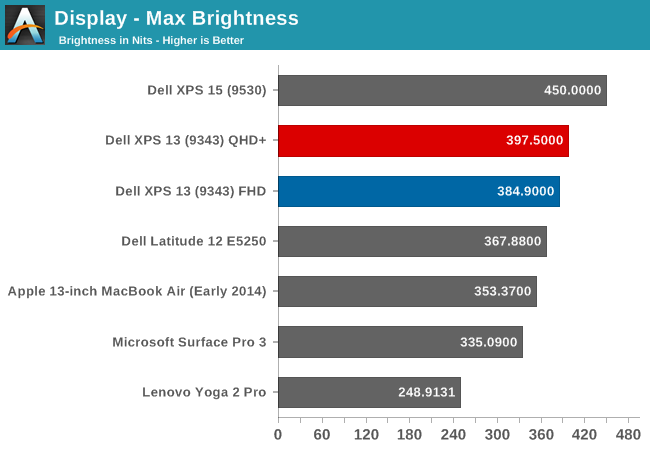
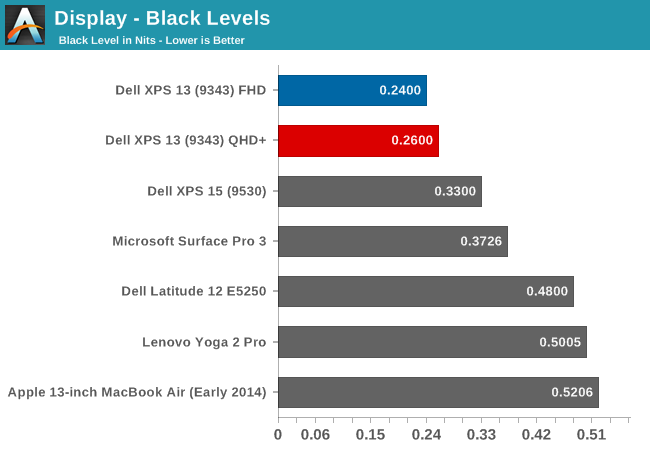
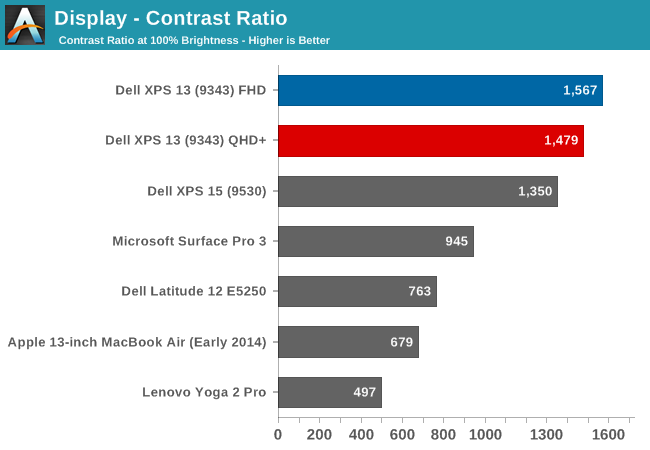
Both displays get very bright. Dell claims 400 nits brightness on the XPS 13 and we measured almost that much. Also, the black levels were very good on both displays, giving a contrast ratio close to 1500:1 on both units. Minimum brightness is around 16-17 nits on both models as well, so there is quite a bit of range on the displays to let them work on almost any situation.


On the QHD+ version, grayscale is a decent result, coming in around delta E of 3. The gamma unfortunately really drops off at the upper end of the range. The color temperature is a bit warm, and as the chart shows, the greens are a bit high. The FHD model does not fare so well, with the gamma going quite high, and the grayscale DE being almost 6.
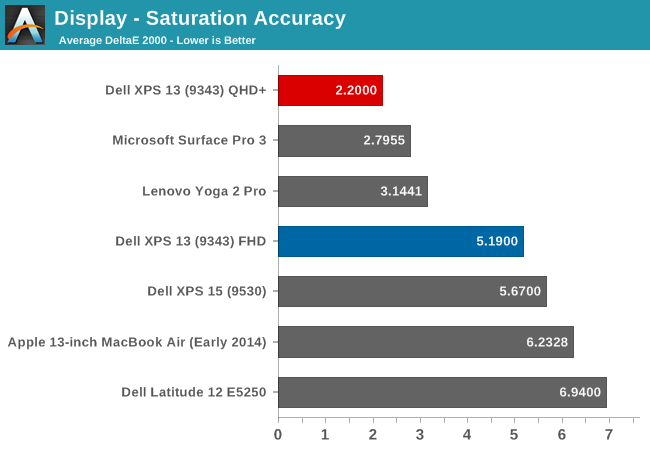
Dell does well on the saturations, with both displays being able to do the entire sRGB color space. Once again, the QHD+ model scores a lot better, with the saturation a very nice 2.2 dE, while the FHD version is closer to 5 - not an awful result, but much worse than the upgraded model.
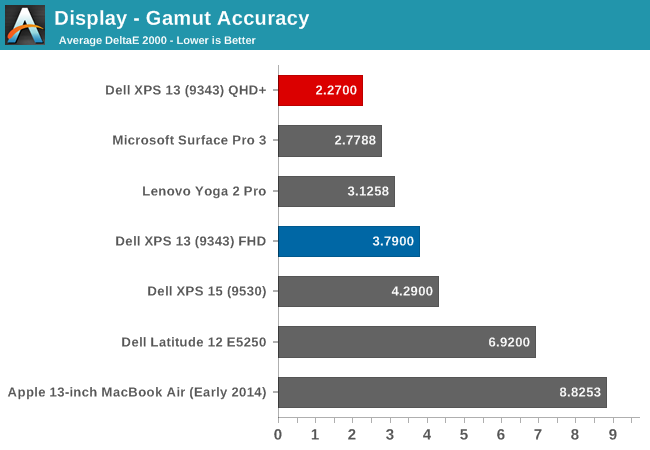
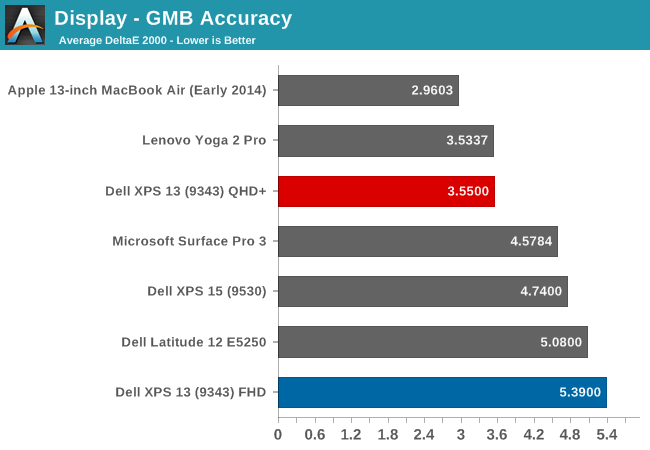
Wrapping up with the Gretag Macbeth results, again the QHD+ model does very well, with the FHD model just average. I have to note though, that even though the GMB score was very good on the QHD+ model, all of the colors that were off, with some of them around DE of 6, were the skin tones. Without calibration, anyone wanting to use this for photo editing may not much enjoy it, and with the auto-brightness issue, the calibration will not work so there is no way to see if the scores improve after calibration.
The Infinity Display is certainly one of the defining characteristics of the XPS 13, and especially with the QHD+ version the color accuracy and other characteristics are quite good. The Auto-Brightness is certainly an issue, and hopefully Dell will offer up a way to disable this either in software or the BIOS soon.


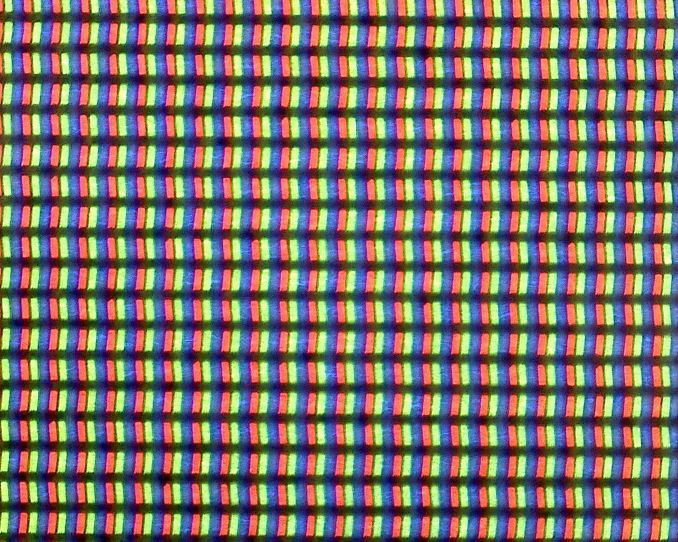
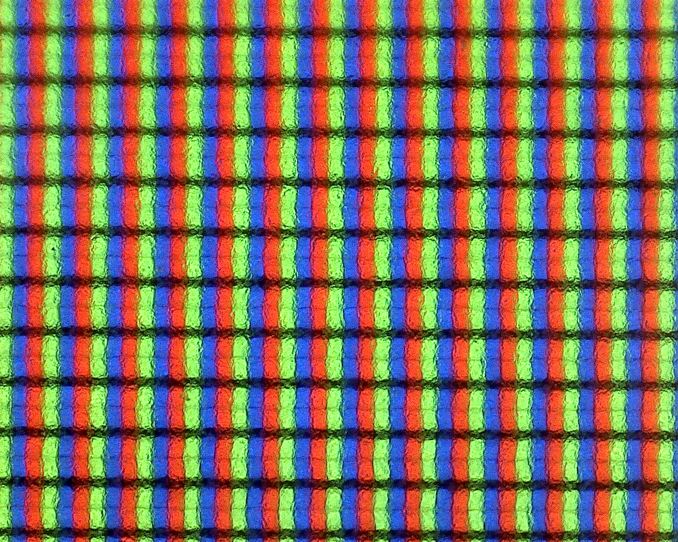
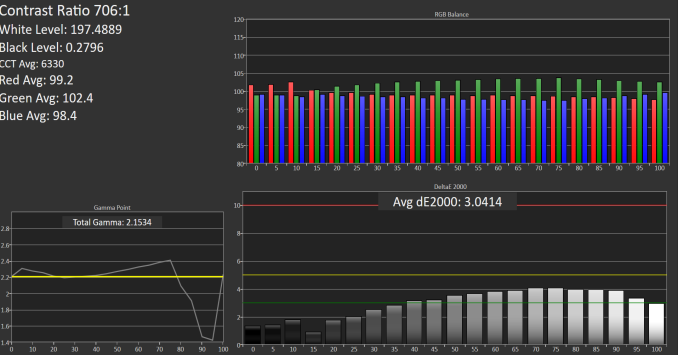
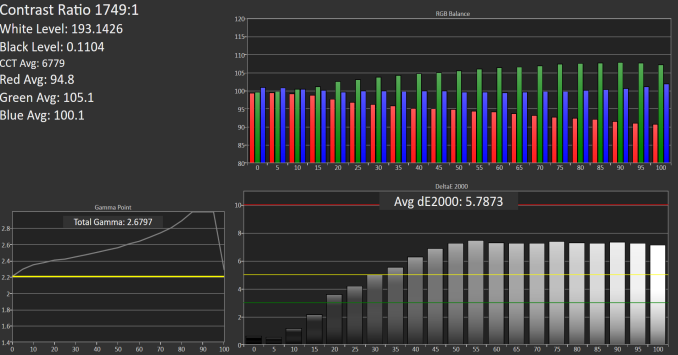
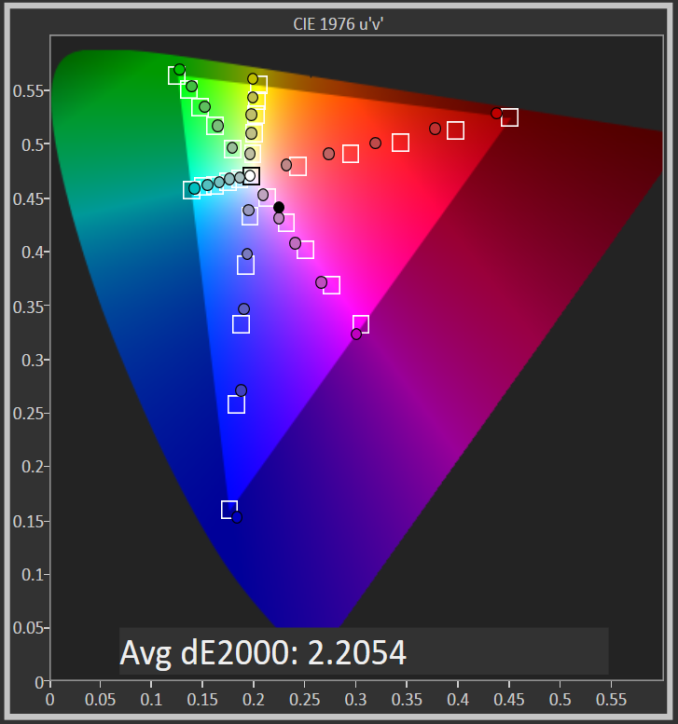

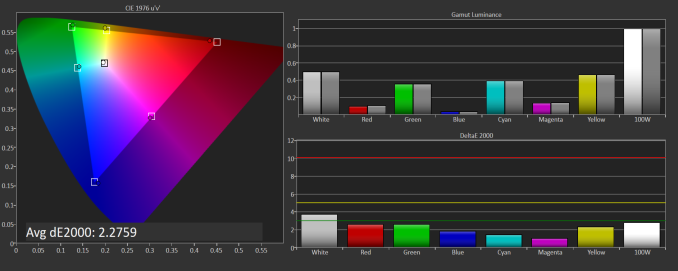
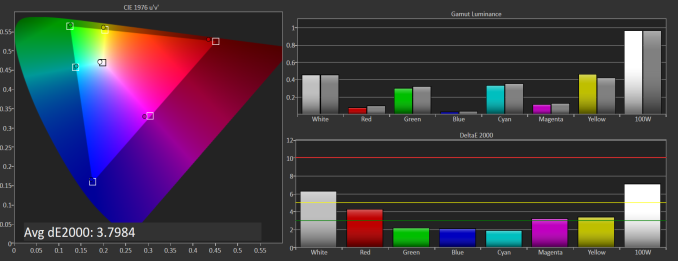

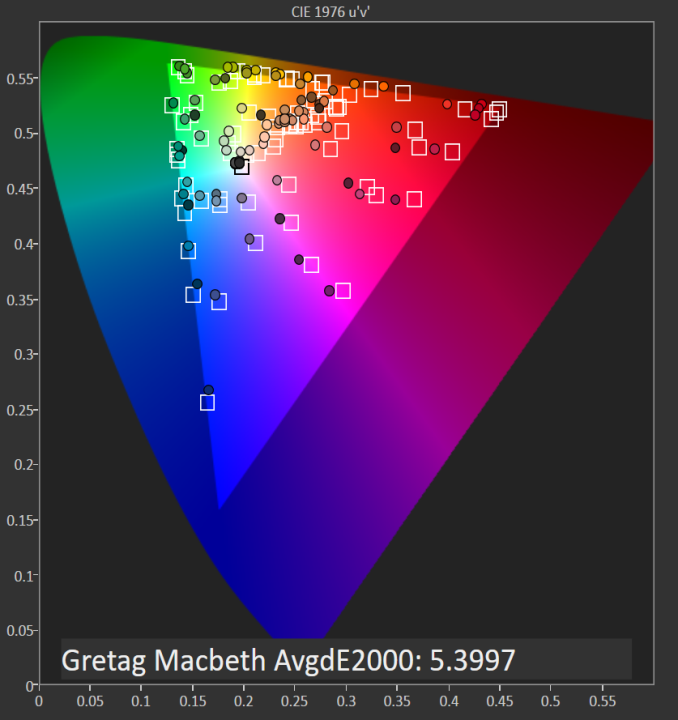








201 Comments
View All Comments
Wineohe - Thursday, February 19, 2015 - link
I see reviews of laptops with decent IPS displays but then when I actually try to purchase them they don't seem to exist. They seem to offer them for a time, and then they don't. I used a small XPS and now a Lenovo X220, both with IPS for my photography work(amateur), but I've been starting to look for a replacement. The X220 is really toooo small for my aging eyes. This looks perfect and frankly I don't think the price is that bad. My last two were in the 2k range. However the inability to calibrate is a non starter with me. They have to sort that out.Shadowmaster625 - Thursday, February 19, 2015 - link
Can you add DOTA2 battery life. I'm guessing even this notebook would struggle to deliver 3 hours of DOTA/LOL but it would be nice to know for sure.Jeff7181 - Thursday, February 19, 2015 - link
After my experience with the XPS12 and Dell's support, I wouldn't touch this thing with a 10 foot pole. My XPS12 is just plain broken and Dell won't do anything for me except keep sending me a box to ship it to their depot, where they do nothing but reinstall the OS, verify it boots and send it back. Extremely disappointed.peterfares - Thursday, February 19, 2015 - link
If you've had it serviced multiple times and are still in warranty insist on having the unit replaced. I had a first gen XPS 12 that Dell replaced with a 2nd gen XPS 12 last year (and got upgraded from a 256GB SSD to 512GB)VengenceIsMineX - Thursday, February 19, 2015 - link
I'm very curious about the auto brightness issue. That is a Windows control in the detailed power settings not something that is usually manufacturer specific, did turning Display>Enable Adaptive Brightness off not work?Also, just for clarity, was this a version straight from Dell with their usual bloat or a clean software image like what Microsoft sells in their stores? Seeing some wildly varying reviews on battery life, for example the Verge ragged the battery as being 6 hours in normal usage which is obviously not what you are seeing and I'm curious about possible reasons.
Drumsticks - Thursday, February 19, 2015 - link
For starters the Verge places the brightness at like 70% during their battery tests, which is going to seriously penalize this display. Basically, their reviews aren't exactly scientific. (The reviewer even mentioned how like 30% brightness was enough for him).Ryan Smith - Thursday, February 19, 2015 - link
"did turning Display>Enable Adaptive Brightness off not work?"Correct. It is not possible to turn off adaptive brightness at the moment.
Brett Howse - Thursday, February 19, 2015 - link
I'm not sure what other sites do for testing, but we try to be as consistent as possible. The laptops are put in power saving mode, the display is put at as close to 200 nits as possible, and we use IE to test for battery life. All of our tests are repeated multiple times. All I can say is that I checked this a couple of times, and with the asterisk that Dell has enabled adaptive brightness with no way to disable it, the results were consistent across the runs.VengenceIsMineX - Thursday, February 19, 2015 - link
If you really wanted a big SSD on the FHD model, it is pretty cheap to just buy it with the 128 gb hd and install your own 512GB even with it being m2. 512GB SATA 3 Transcend on Amazon is now just over $200, PCIe at roughly twice that. Given OEM's tendency to gouge on storage (at least not as bad as Apple which is just outrageous) it's the better way to go and even with drive copying and screwdriver work it's a 30 minute operation.repoman27 - Thursday, February 19, 2015 - link
If you're comparing the prices of the cheapest SSDs you can find on Amazon or Newegg to CTO options from a major OEM, there's obviously going to be a difference. What makes Apple's pricing "gouging"? 256 GB SSD options generally run $200 extra compared to 128 GB, or $500 extra for 512 GB. Do you have a cheaper source for Samsung XP951 based PCIe 2.0 x4 SSDs using MLC NAND?